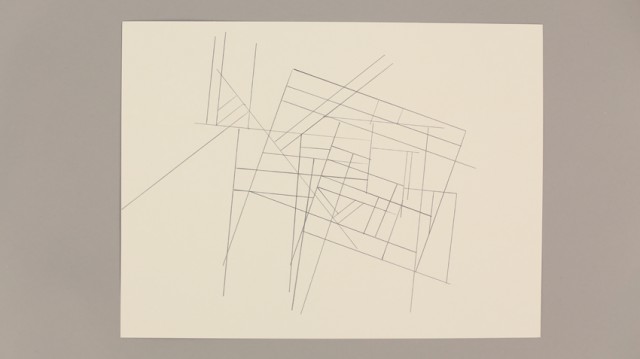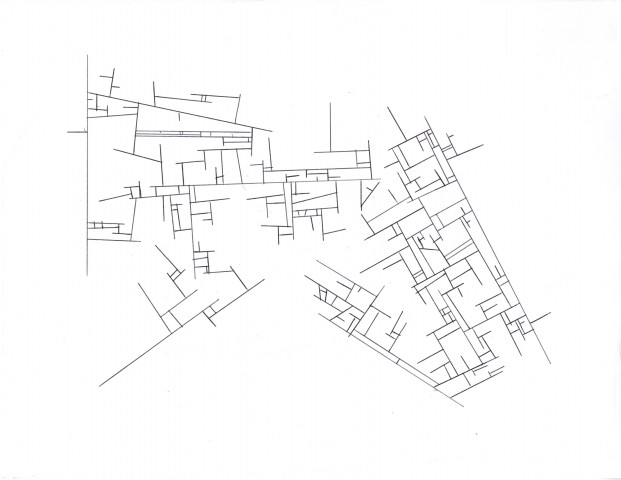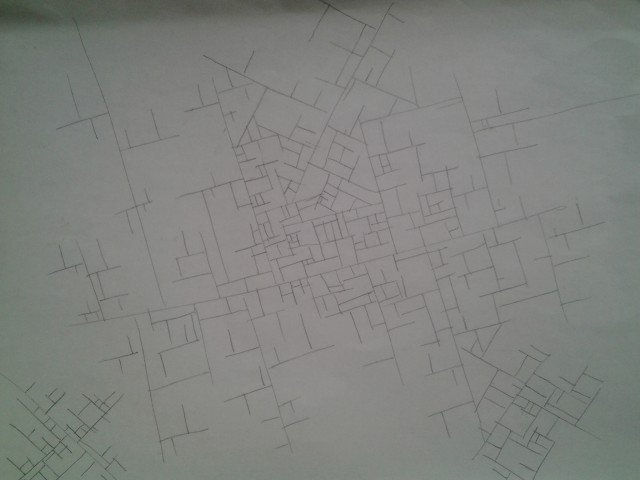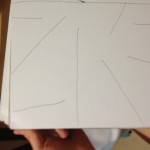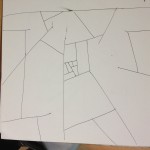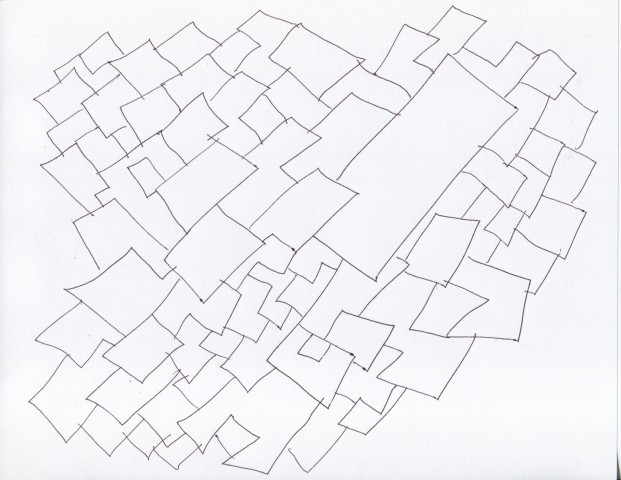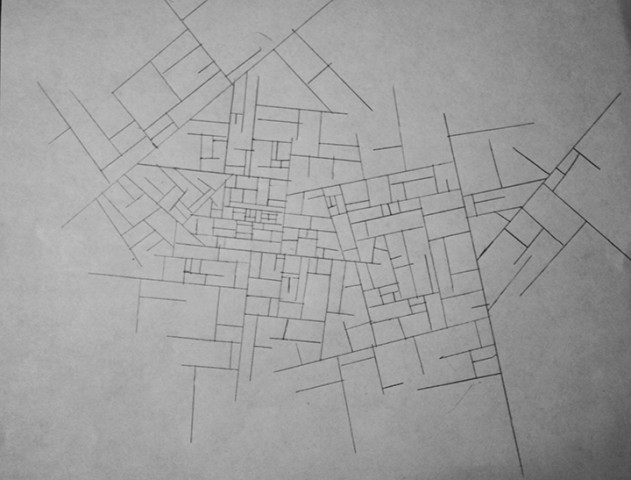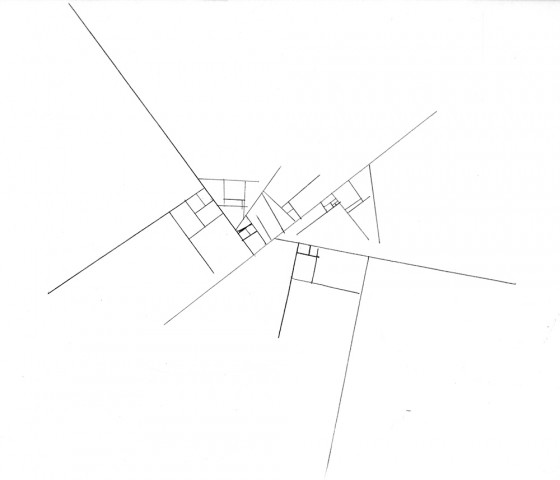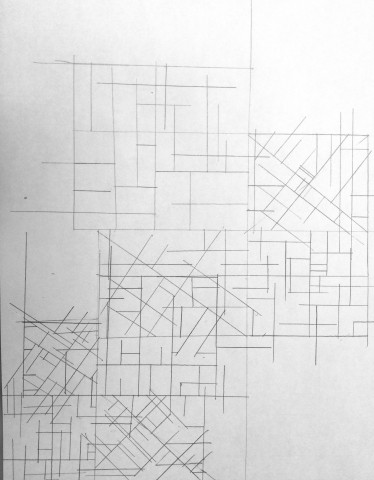“First, mark a point midway between the midpoint of the center of the page and the midpoint of the right hand side of the page. Second, draw four lines of different lengths protruding from this same point. Then draw lines coming from these lines until you tire of drawing lines. Third, draw a line reaching from the midpoint between the upper left hand corner and the lower left hand corner to the first point you drew. Continue to draw lines protruding from this line. Now draw lines protruding from these lines. Fourth, mark a third point in the upper-left hand region of the page. Draw lines protruding from this dot for three minutes. Fifth, ensure that the majority of lines on the page are enclosed into boxes, with closed sides. No two boxes next to each other should be exactly the same size. Additional lines may be drawn to enforce this.”
NB: After drawing this, I realized there is no way it would ever return either of the sample algorithms. Mostly because of: (a) the line drawn connecting the midpoint of the left hand side and the first point drawn does not exist on one of the samples and (b) the lines coming from point c are not radial in nature. However, the possibilities continue to be endless in nature.
Here was my try at executing my own algorithm:

